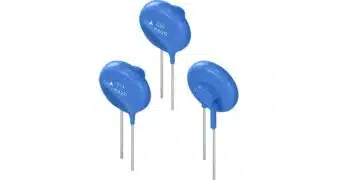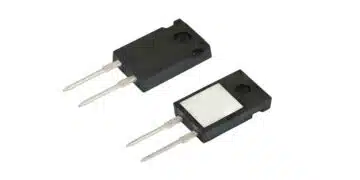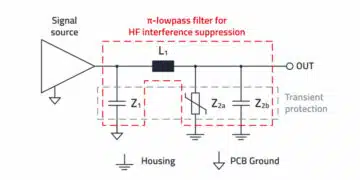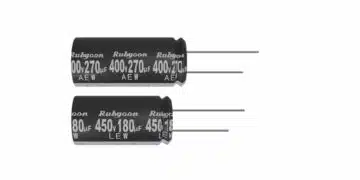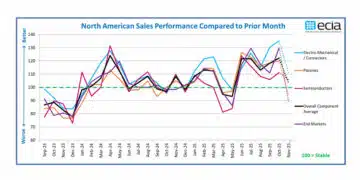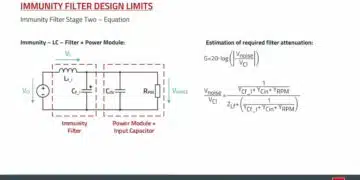Murata three-terminal MLCC capacitors attains industry-leading 4.3 µF capacitance in a compact 0402 inch package to address space-restricted automotive deployments.
Murata has set a new capacitor performance benchmark with the introduction of its NFM15HC435D0E3. This is the world’s first* automotive-grade three-terminal multi-layer ceramic capacitor (MLCC) to provide a capacitance of 4.3 µF in a 0402 inch (1.0 × 0.5 mm) size. As a result, superior power decoupling and noise removal can be brought to automobile designs in which high-performance processors are being employed – such as for advanced driver assistance systems (ADAS) and autonomous driving functions.
- *Murata findings as of January 23, 2022.
By featuring a three-terminal arrangement, the NFM15HC435D0E3 exhibits a significantly lower equivalent series inductance (ESL) than would be expected with two-terminal components. This means that stable circuit operation can be supported, while significantly reducing the mounting area required (with a footprint of just 1.0 mm × 0.5 mm).
In order to achieve the industry-leading capacitance, Murata has leveraged its proprietary thin layer forming technology and a high-precision lamination process. Improvements have been achieved through the atomization and equalization of the constituent ceramic and electrode materials.
“The number of sensors and processors in vehicles continues to grow, boosted by the more widespread use of ADAS and migration towards higher levels of vehicle autonomy. This means that more MLCCs need to be fitted into designs,” states Takahiro Yoshida, Capacitor Division, Senior Manager of Marketing Department.2, at Murata. “To support this ongoing trend, MLCCs with enhanced high-frequency characteristics and greater capacity, combined with minimal size, must be sourced. Through the NFM15HC435D0E3, Murata is achieving all these objectives, enabling reduced impedance in the high frequency band via far fewer components.”
The NFM15HC435D0E3 is now in mass production and available globally. Moving forward, Murata will continue to develop its capacitor line-up to attend to the evolving needs of the automotive market.




